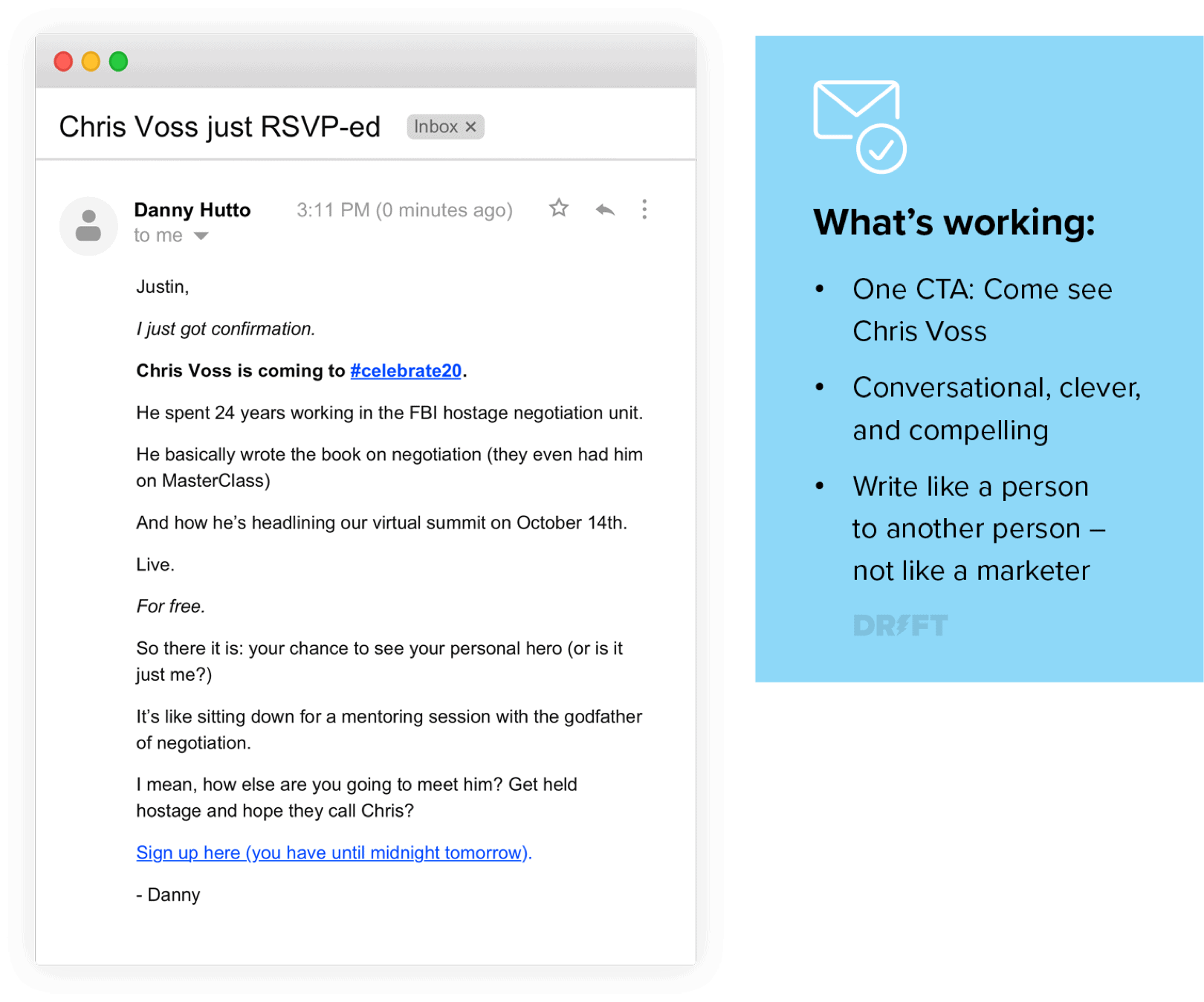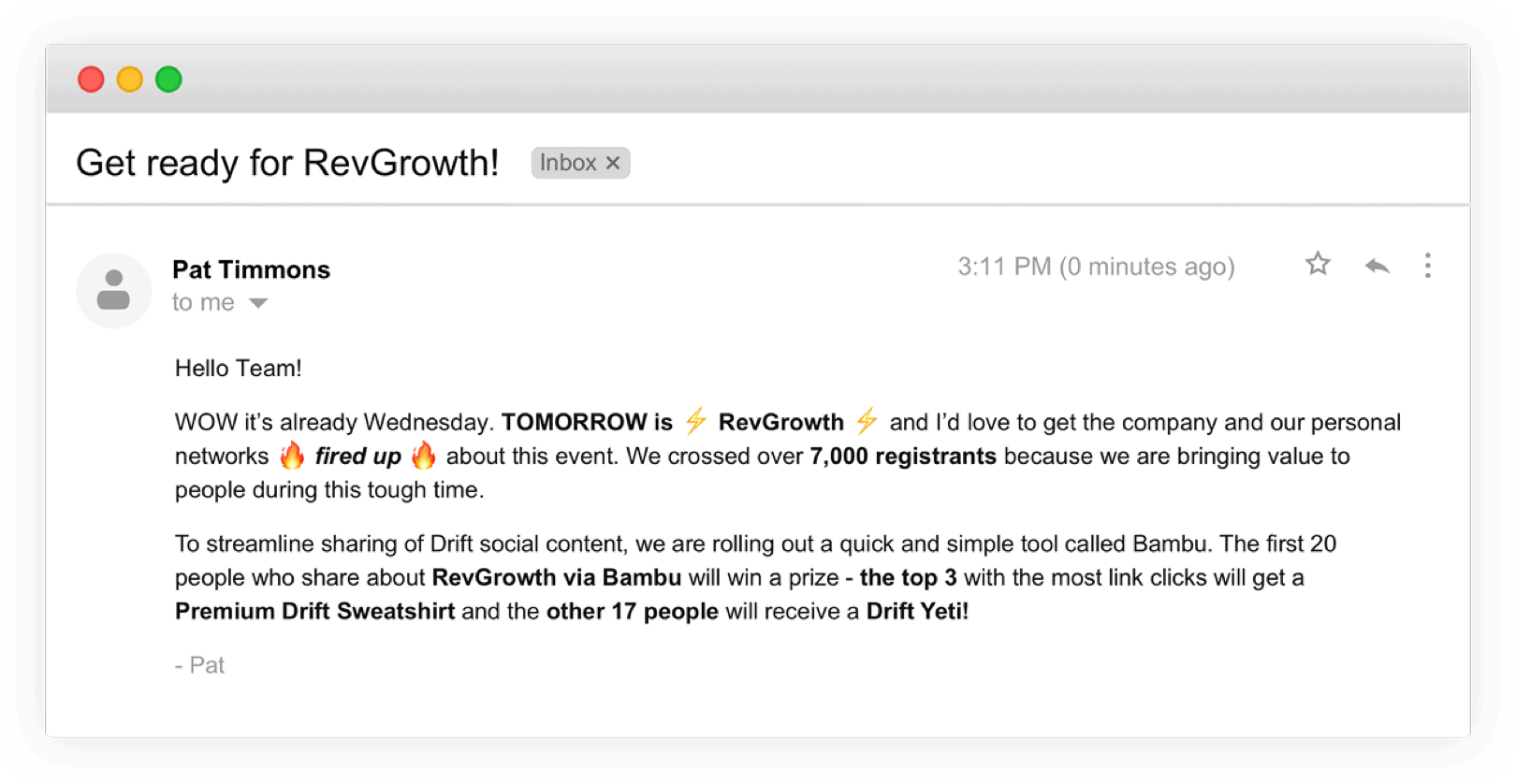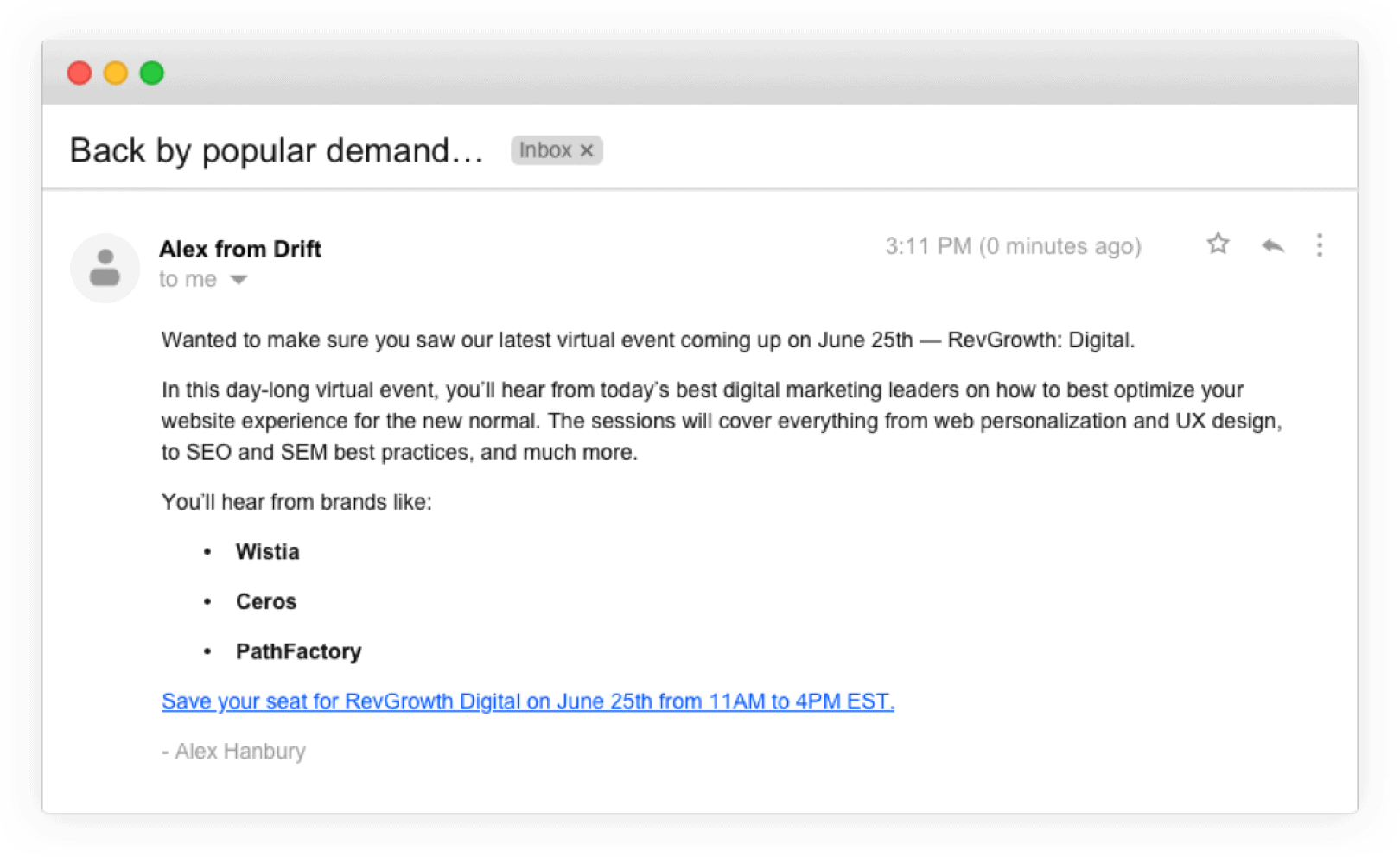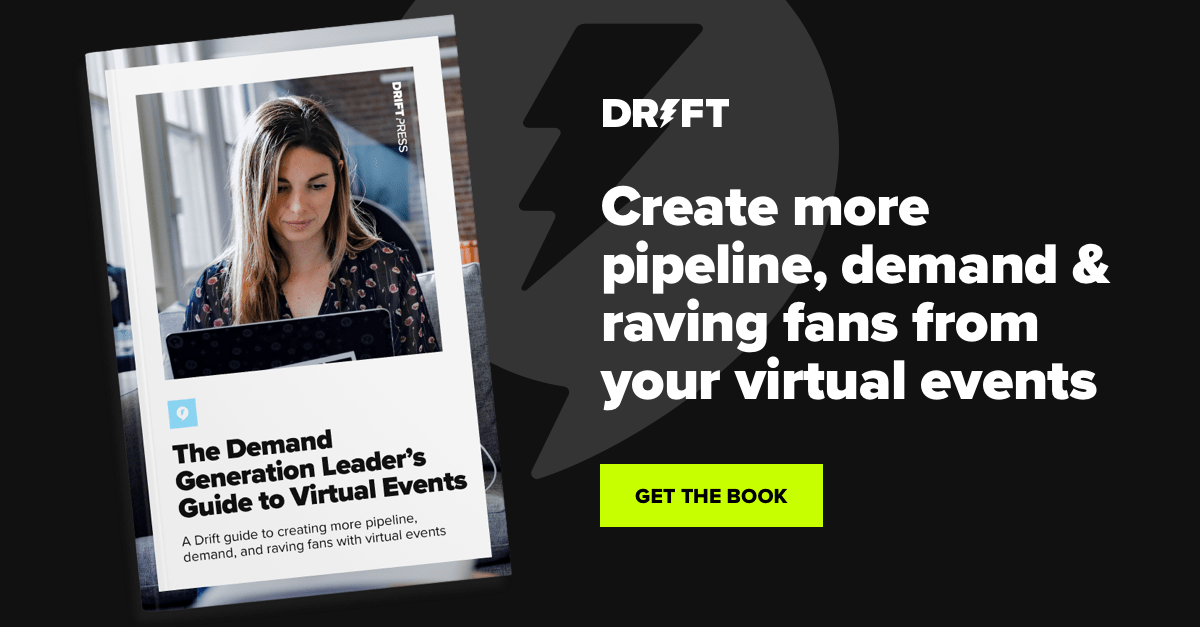If you’re like 93% of marketing leaders, more virtual events are (still) in your future.
While your in-person event registrants may convert six months or a year before the event date, virtual events have a much smaller registration window.
You have to make the most of the time you have.
If you want to make sure all the effort and coordination involved to create an incredible virtual event that captures the experiential excitement of physical conferences, you need a solid promotion plan.
The good news? Today I’m sharing the playbook for an event promotion plan that converts – so you can focus on showtime ✨
First Thing’s First: Streamline the Registration Process
The best promotion plan in the world won’t help you if your attendees can’t register seamlessly.
63% of marketers say that event registration software has the greatest impact on event success.
You need to make it easier for your customers to register. Replace long registration forms that capture information you already have with a chatbot that asks for just one thing: an email address.
You can do this a few different ways, depending on your event goals:
- Pre-register for the next event during an existing one: If you’re planning a series or know you’ll be doing an event on a similar topic, add a pre-registration option to the end of a playbook to capture early interest.
- Give personalized ABM outreach: Make sure target accounts register for an event when they visit your website. (And pass to sales for that final alley-oop.)
- Keep the conversation going: The Drift Retargeting bot greets return visitors with new information around the event and points them back to the event page to register.
Here’s what it looks like in action:

Once you’ve made it easy to register, you can start to execute the rest of your promotion plan.
5 Elements of a Pre-Event Promotion Plan That Converts
There isn’t one magical channel that’s going to make your event buzzworthy. Promoting a virtual event – especially a multi-day one or a larger conference – takes a cross-functional team with demand gen, creative, partner marketing, sales, social, and content involved. Here are the top five tactics you can use to make sure you hit your registration numbers:
1. Choose Partners That Expand Your Reach
Okay, I’ll let you in on the biggest event planning tactic we use for almost every Drift event: choose the right partner.
Don’t go it alone. Not only is it a great opportunity to access a completely new audience, but you can also share the load on content and lead generation so you can deliver something bigger than just what your company is able to offer.
But it’s important to choose wisely. If you’re one of those people that ended up doing all the work in every group project in school, listen up:
- Lead-share fit: Accessing a new audience only works if they fit your ideal customer profile (ICP). New leads for new leads’ sake doesn’t help anyone.
- Thought leadership fit: You should be just as excited to work with them as they are with you. Do you talk about the same things? Have expertise on similar topics? You want to be able to build content that brings something new to the table.
- Compliance fit: Boring, I know. But you don’t want to get burned later without proper documentation and GDPR compliance.
Once you find the right partner, you can draw up a lead-sharing agreement, contracts, and follow-up planning.
The foundation of any promotion plan starts with our partners and our lead-sharing agreements. (It’s one of the best ways to drive registrations – usually half (!) of Drift event registrations come from partner referrals.)
What you agree on varies by the goals of each partner, but it generally falls into two models, tracked by unique UTM parameters:
- One-to-one match: A one-to-one match policy means that for every contact a partner drives to your virtual event, they get a lead.
- Lead-share threshold: Set a registration goal partners must meet to get the entire lead list. For example, if a partner drives 500 leads to attend, they get the entire list.
Once you have the right partner and lead-sharing agreement in place, you can get to work on your share of the promotion with email, social, and activating your team.
2. Send the Right Email Invitations
Your customers and prospects probably have their fair share of virtual event invitations in their inbox these days. 70% of marketers have moved their face-to-face events partially or fully to a virtual platform – but the best way you can stand out is with the right email campaigns.
First, identify the segment of your audience who will get the most value out of attending a particular event. Rather than sending it to everyone, think about topical interest and past behavior.
For RevGrowth: Virtual Experiences, we segmented for decision-maker level marketers, then by people who attended past events and people who downloaded our virtual event-related content. Our demand generation team personalized the copy for these emails based on recipients’ past actions, which led to higher conversion rates.
And it worked. Personalized emails drove 61% of registrations.
Of course, you’re probably going to send more than one email.
Every time you send, it should tell the recipient something new. Speaker announcements, session information, practical details, calendar reminders…if you’re planning an awesome event, there’s plenty to talk about.
Don’t give it all away at once. Instead, send multiple emails that focus on one new piece of information, like this email from Gong:

But the biggest thing? You gotta test everything.
It doesn’t work just to copy and paste the copy from the email above (though, it’s a pretty good email!). You have to see what works best for your audience:
- Which subject lines drive the most opens?
- How do plain text emails perform vs. designed HTML templates?
- How many links should you include in an email?
- Which speakers drive the most registrations?
…the more you know about how your audience reacts to invitations, the better you can fine-tune your pre-event nurture. Experiment with subject lines, CTA placements, messaging, and content.
That makes your email invites go from one-off efforts to a repeatable, scalable element of your pre-event promotion.
3. Engage Your Audience on Social Media
Social media is where you build 👏 the 👏 hype 👏
For paid social, double down on the channels that really work for your audience. That’s why for RevGrowth events, we focused on LinkedIn and Facebook. They’re the channels that seem to work best for us.
But paid only gets you so far. If you want to generate buzz, you have to engage your audience, not just shout about speaker updates, event highlights, and sponsorship announcements.
Marketers often miss the “social” part of social media while trying to hit registration numbers. Is someone talking about a topic related to your event? Invite them!
Use the topic for the event as an anchor for social campaigns over the course of the weeks leading up to the event. Share teaser posts, similar guidebooks, or other content that can pique a follower’s interest and make them excited about attending. Create a unique hashtag for your event that expands your event coverage across multiple networks and makes it easy to find information or network with other attendees.
4. Encourage Employee Promotion with a Little Friendly Competition
The more people share your event, the more people will see it. Operationalizing employee promotion expands touch points and makes outreach feel more personal. Start by making sharing easy with tools like Bambu, which includes pre-written posts employees can customize.
Then, share the event internally to remind your team why it’s important to share – and any incentives you’ve built in like a friendly competition or contest. For our very first RevGrowth event, we offered up some premium swag:

5. Activate Your Sales Team
I’ve saved the most powerful strategy for last.
Who knows how to drive attendees better than your sales team?
Events give sales an easy access point to engage with target accounts or build deeper relationships with existing customers. With Drift, sales are notified when a target account is on the event page. That way, reps can drop in and engage with buyers to drive registrations and answer any event-related questions.
Then, drive additional engagement by crafting sales-specific outreach messaging for each new announcement SDRs can personalize.

Sometimes, the unscalable things are the ones that work best.
It’s easy to get lost in registration numbers and the ins and outs of event planning. But at the end of the day, you’re hosting an event to add value to your audience – which hopefully, encourages them to purchase from you.
Adding a personal touch from your sales team can be just the push a prospect needs to say yes.









